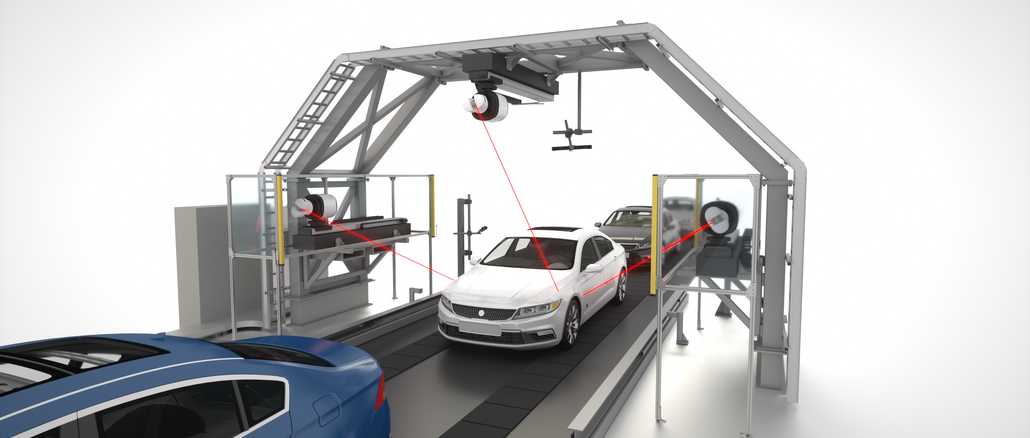
Nikon Metrology recently introduced its Apdis gap and flush measurement system. This approach to quality inspection of vehicle bodies from an early stage of body-in-white to the final complete vehicle in the automotive industry is based on the Apdis Laser Radar.
The new system provides a fully automated method of gap and flush measurement on vehicles in the moving production line. No robots are required for this, so the associated complex programming and corresponding safety requirements are also eliminated.
Uneven gap dimensions between the individual add-on parts as well as their height offset, which give the impression that the components are not flush with each other, often influence customers’ purchasing decisions. In addition, such deviations can result in unwanted noise and vibration. All of these factors affect how the quality of a vehicle, and thus the brand as a whole, is perceived. Accurate gap and flush measurements are therefore critical to maintaining corporate reputation.
System with far-reaching improvements
The latest generation of Apdis laser radar enables faster and more accurate measurements. The Apdis gap and flush measurement system uses this technology for fully automatic measurements on vehicles in the moving production line within the cycle time, and at the same time is designed to ensure maximum component and work safety. The system provides reliable measurement results on all sides of the vehicle regardless of the color or gloss level of the surface, according to Nikon.
Until now, gap and flush measurements have been carried out either manually by qualified specialists or with the aid of complex robot-based systems – due to operator influence or short working distance, there is always a risk of damage to the customer’s vehicle. In the Apdis gap and flush measurement system, the large distance to the measured object and the integrated protective devices, which do not interfere with the production line area, ensure the safety of components and production personnel.

© Nikon
Fast, fully automatic quality inspection on finished vehicles
The Apdis gap and flush measurement system was developed by Nikon Metrology together with the experts at VRSI, who already have many years of experience integrating laser radar sensors at major automotive manufacturers. According to the supplier, the new system sets “completely new standards in fast and fully automated quality inspection on finished vehicles.” It can perform measurements at belt speeds of up to 140 mm/s, has a large measurement volume and uses up to three laser radar sensors for measurements around the entire vehicle for this purpose. This makes the gap and flush measuring system suitable for inspecting different types of vehicles – from small cars to large SUVs and trucks.
The sensors are carried along parallel to the production line, so that no mechanical interface between the two is required. The different positions of the vehicles on the production line are automatically determined using multiple 3D sensors before the vehicle passes through the system. Once the vehicle is inside the system, the laser radar sensors use linear guides to move in sync with the speed of the production line, allowing them to perform gap and flush measurements at pre-programmed areas.
On each vehicle, the required gap and flush measurements can be performed on 170 different areas per run.
The main features
With the use of three laser radar sensors for the measurements around the vehicle, the number of measurement positions can be significantly increased, and thus the quality control is significantly improved. The large measuring distance of over 0.5 m ensures the safety of the components and the production personnel. Due to the exclusive use of linear guided sensors, a collision of measuring system and vehicle is excluded. For optimal work safety, the system is equipped with light barriers and laser scanners. This helps to avoid damage and injuries as well as interruptions in production.
The high measuring accuracy is another decisive advantage of the Apdis gap and flush measuring system. Depending on production conditions, precise measurements with dynamic repeatability better than 0.150 mm for flush measurements and 0.300 mm for gap measurements are possible. Independent tracking of the vehicle and the use of linear guides reduce the effort and complexity of programming, most of which can be done offline before commissioning. Thus, adding, removing or modifying measuring positions is possible at any time without risk of collision. Complex robot programming is also eliminated, further reducing installation and modification time.
